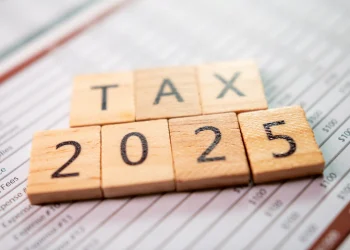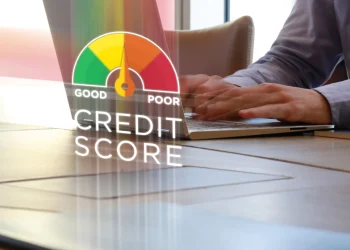Forget all the noise! While everyone’s shouting about chatbots and generic content mills, the real goldmine in AI passive income ideas lies hidden in less obvious corners. 2025 isn’t about jumping on overcrowded bandwagons; it’s about spotting the quiet trails where AI can genuinely work for you, building streams that flow while you sleep. Interested? You should be. Let’s uncover these under-the-radar opportunities ripe for the picking.
Why These AI Passive Income Ideas Are Your 2025 Advantage
Look, AI is exploding. But most folks? They’re chasing the same few tired ideas – writing basic articles, creating generic images. It’s like rushing to a goldfield where everyone’s already elbow-to-elbow. The competition is fierce, the returns are dwindling, and standing out feels impossible.
The real opportunity lies in niches where AI solves specific, overlooked problems or creates unique value that isn’t easily replicated by a million others. These hidden gems leverage AI’s power but apply it creatively, targeting underserved markets or automating complex-enough tasks that they remain profitable with less hustle. That’s where true passive potential lives in 2025.
1. The Niche Content Licensing Library (Your AI-Powered Asset Vault)
Imagine building a digital vault filled not with gold bars, but with highly specific, ready-to-use content assets. We’re talking beyond basic blog posts. Think:
- Ultra-Niche Blog Post Templates: Templates for industries like “Sustainable Aquaponics Startups” or “Vintage Typewriter Restoration,” complete with AI-generated outlines, keyword research, and tone guides.
- Specialized Social Media Snippet Packs: Bundles of pre-written captions, hashtag sets, and engagement prompts for hyper-specific audiences (e.g., “Instagram Reels for Independent Board Game Designers”).
- Industry-Specific Email Sequences: Automated sequences for SaaS onboarding in niche markets, freelance service pitches for obscure specializations, or abandoned cart flows for unique e-commerce products.
Why it’s Low Competition & Passive in 2025: Everyone’s selling generic content. Few are building libraries of premium, niche-specific assets. AI allows you to rapidly generate high-quality starting points for these assets. Once created and uploaded to a platform like Gumroad, SendOwl, or even your own site (using WooCommerce or Easy Digital Downloads), they become licensable digital products. Your job? Market initially, then let the licensing fees roll in passively. Updates are minimal – refresh templates maybe once a quarter with new AI insights.
Getting Started: Identify 2-3 underserved niches you understand (or can research). Use AI (like Claude, or Gemini Advanced with careful prompting) to generate high-quality samples within those niches. Package them attractively. Set up a simple storefront. Focus on solving a very specific content pain point for that niche.
2. The “Hyperlocal” or “Hyperspecific” Dataset Creator
Data is the new oil, but not all data is created equal. While giants hoover up broad data, there’s massive demand for tiny, incredibly specific datasets that power niche AI applications. Think:
- Localized Sentiment Data: Training data capturing how people in specific small towns or regions talk about local businesses, events, or issues (invaluable for local marketing AI tools).
- Images of Rare Objects/Scenarios: Curated datasets of specific, hard-to-find items (e.g., “High-res images of vintage medical equipment from 1920-1950” for restoration AI or historical games).
- Audio Samples for Unique Accents/Dialects: Clean recordings of very specific regional accents or industry jargon for voice AI training.
Why it’s Low Competition & Passive in 2025: Creating broad datasets is expensive and competitive. Creating micro-datasets requires identifying a very specific need, which most large players overlook. AI can help gather initial data (scraping forums, public reviews, image sites with care for copyright) and even assist with initial cleaning/organization. Once the dataset is built and validated, you can sell it repeatedly on marketplaces like Hugging Face Datasets, Kaggle, or directly to companies in that niche. The initial creation effort is front-loaded; sales are passive.
Getting Started: Talk to developers or businesses in niche fields. What tiny data do they desperately need but can’t find? Use AI tools for web scraping (ethically!) and data organization. Focus on a single, incredibly specific dataset type first. Ensure data quality and clear documentation.
3. Bespoke AI Tool Micro-SaaS for Micro-Communities

Forget trying to build the next ChatGPT. The magic is in building tiny, laser-focused AI tools that solve one annoying problem for a very specific group. Examples:
- “Indie Board Game Rulebook Explainer & FAQ Generator” for small game developers.
- “Local Farmers Market Inventory Tracker & Recipe Suggester” for a specific community.
- “Academic Journal Style Guide Formatting Assistant” for a specific discipline.
Why it’s Low Competition & Passive in 2025: Large SaaS companies target broad markets. Micro-SaaS targets tiny, passionate communities often ignored. AI (via APIs from OpenAI, Anthropic, or open-source models) allows you to build powerful automation into these tools quickly and cost-effectively. Once built, hosted on platforms like Bubble, Softr, or even simple serverless backends (Glide apps), it runs on autopilot with minimal maintenance. Charge a small monthly fee ($5-$20). A few hundred dedicated users in a passionate niche can generate significant passive income.
Getting Started: Immerse yourself in a niche community (online forums, Reddit, Discord). Listen for repetitive, manual tasks they complain about. Can AI automate 80% of it? Build a simple MVP using no-code/low-code tools integrated with AI APIs. Validate it within that community first. Marketing is hyper-targeted.
4. AI-Generated “Synthetic” Media Products
Move beyond basic AI art. Think about creating unique products using AI-generated media:
- Procedurally Generated Ambient Soundscapes: Use AI audio generators (like Udio, Suno) to create unique, never-ending soundscapes (“Alpine Forest Stream with Distant Thunder – 8 Hours”). Sell them on stock sites or your own store for creators, streamers, or focus apps.
- Niche Stock Video Elements: Generate specific, hard-to-film stock elements (e.g., “Microscopic Cell Division – AI Generated,” “Underwater Coral Reef Time-Lapse – Synthetic”) using tools like Pika Labs or Runway. Sell on Adobe Stock, Pond5, etc.
- Customizable AI Illustration Packs: Create themed packs of vector-style illustrations using Midjourney/DALL-E 3, but offer them with easy customization (change colors, simple elements) via a simple web interface built with no-code tools.
Why it’s Low Competition & Passive in 2025: Generic AI art is flooding the market. Creating usable, productized synthetic media tailored for specific professional uses (sound design, unique stock assets) is less common. AI generates the core asset rapidly. The passive part comes from selling the finished product on established marketplaces or your own site. Requires curation and understanding what creators actually need, not just pretty pictures.
Getting Started: Identify gaps in existing stock libraries (audio/video/image). Master prompting for consistent, usable outputs in your chosen medium. Focus on quality and uniqueness. Build a small portfolio and upload to relevant platforms. Consider simple customization options to add value.
5. Automated Niche Market Research Reports
Businesses, especially in emerging niches, crave insights but lack the time or resources for deep dives. AI can be your research powerhouse:
- “Micro-Trend” Pulse Reports: Use AI to continuously scrape, summarize, and analyze discussions, reviews, and news from specific forums, subreddits, or review sites within a niche (e.g., “The Monthly Pulse: Sustainable Pet Food Innovations”).
- Competitor Feature & Pricing Trackers: Automate tracking of features, pricing changes, and marketing messaging for key competitors in a specific small market.
- Sentiment Analysis Dashboards: Provide ongoing sentiment analysis on specific brands or products within a tight-knit community.
Why it’s Low Competition & Passive in 2025: Generic market research is competitive. Providing ongoing, automated, hyperspecific reports powered by AI for tiny niches is largely untapped. Set up AI agents (using platforms like GPTs, custom AutoGPT setups, or Make.com/Zapier integrations) to scrape, analyze, and format data. Deliver reports automatically via email or a simple dashboard (built with tools like Softr or Stacker) on a subscription basis. The system runs itself after setup.
Getting Started: Pick a niche you find fascinating. Identify the key online “watering holes” for that community. Design AI workflows to monitor and analyze relevant data streams. Create a compelling sample report. Offer subscription tiers for frequency and depth of insights.
6. AI-Managed Micro-Investing Portfolios (Thematic)
Above is a live heatmap of the Brazil 50 Index
While robo-advisors are common, there’s room for thematic, AI-managed micro-portfolios focusing on very specific future trends identified and tracked by AI:
- “Emerging Climate Tech” Micro-Portfolio: AI scans startups, news, and regulatory filings to identify and suggest small allocations to promising early-stage climate companies (using platforms supporting fractional shares/micro-investing).
- “Space Economy Tracker” Portfolio: Focuses on companies involved in space exploration, satellite tech, and related services, with AI monitoring industry developments for rebalancing signals.
- “Precision Fermentation Food Futures” Portfolio: Targets companies in the alternative protein/fermentation space.
Why it’s Low Competition & Passive in 2025: Large robo-advisors are broad. Creating automated, thematic portfolios based on AI-driven trend analysis for specific future scenarios caters to passionate investors in those niches. AI handles the research and generates rebalancing suggestions. You (or ideally, an automated integration) execute the trades based on the AI’s signals via an API-linked brokerage (like Alpaca for testing, or integrated platforms). Charge a small AUM fee or flat subscription. Requires significant upfront setup and compliance understanding (consult a professional!), but runs passively afterward.
Getting Started: Deeply research brokerage APIs and compliance (this is crucial!). Choose a compelling, data-rich theme. Develop robust AI analysis and signal generation criteria (backtest rigorously!). Start small, perhaps as a model portfolio or newsletter first, before full automation. Transparency is key.
7. Predictive Analytics for Hyper-Local Events/Services
Can AI predict local demand? Increasingly, yes. Offer predictive insights for small, local businesses:
- “Footfall Forecasting for Pop-Up Shops”: Analyze local events, weather patterns, social media buzz, and historical data to predict busy times for pop-up vendors or markets in specific areas.
- “Demand Spikes for Local Home Services”: Predict likely surges in demand for services like plumbing, HVAC, or landscaping in specific neighborhoods based on weather forecasts, local event schedules, and even permit data.
- “Optimal Pricing for Seasonal Rental Owners”: Suggest dynamic pricing adjustments for vacation rentals in specific locales based on predicted demand, competitor pricing, and local events.
Why it’s Low Competition & Passive in 2025: Large analytics firms target chains. Small local businesses are underserved. AI models trained on hyper-local data streams (often publicly available or scrapable) can provide valuable predictions. Set up the data ingestion and model pipeline. Deliver simple predictions via SMS, email, or a basic dashboard on a subscription basis. The system runs automatically, requiring only occasional model retraining.
Getting Started: Partner with a few local businesses for pilot testing. Identify the most valuable prediction for their survival. Find relevant local data sources (city websites, weather APIs, event calendars). Build a simple predictive model (Python libraries, or even advanced AutoML tools). Automate the reporting.
Conclusion: AI Passive Income Ideas For 2025
The era of easy, generic AI passive income ideas is maturing. 2025 demands strategy and creativity. The real opportunity isn’t battling millions for scraps in saturated markets; it’s about leveraging AI’s power to serve unmet needs in overlooked niches. These seven hidden streams – from licensing niche AI assets and crafting hyperspecific datasets, to building micro-tools for passionate communities and selling synthetic media products – offer paths to genuine automation and recurring revenue with less intense competition. The key lies in specificity, problem-solving, and smart automation setup. Build the system, set it in motion, and let your AI passive income ideas work diligently for you.













